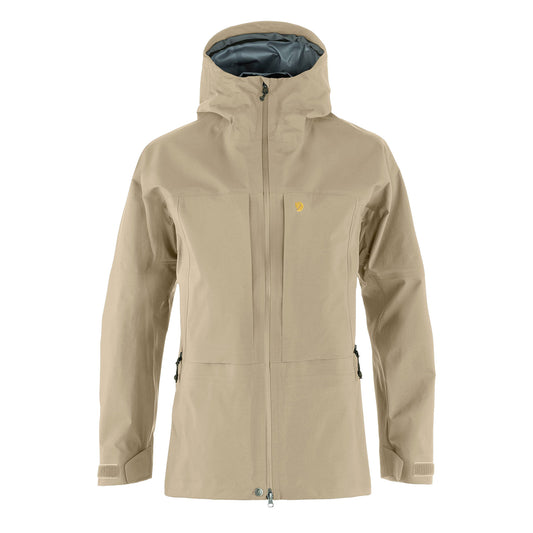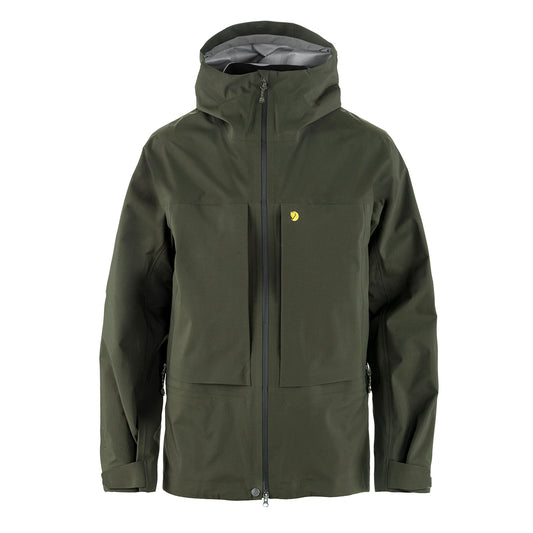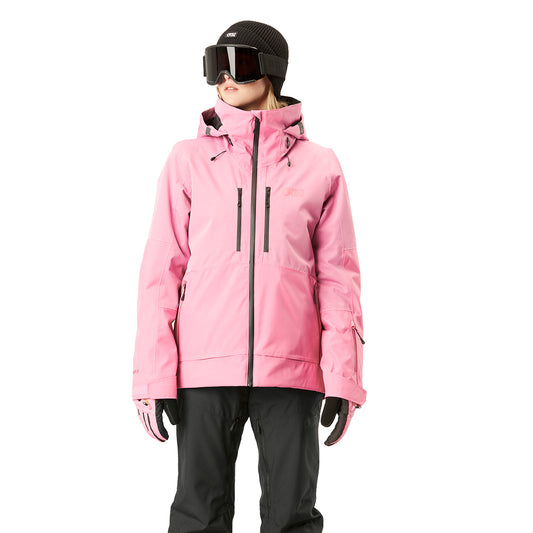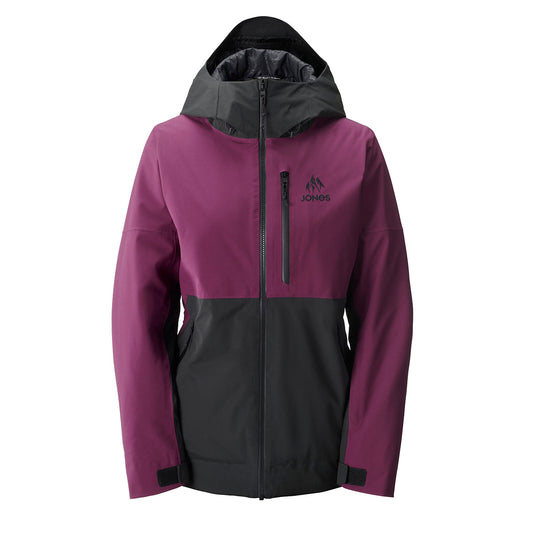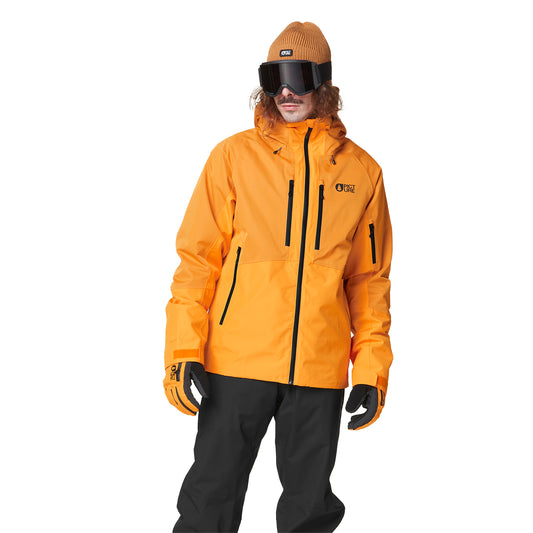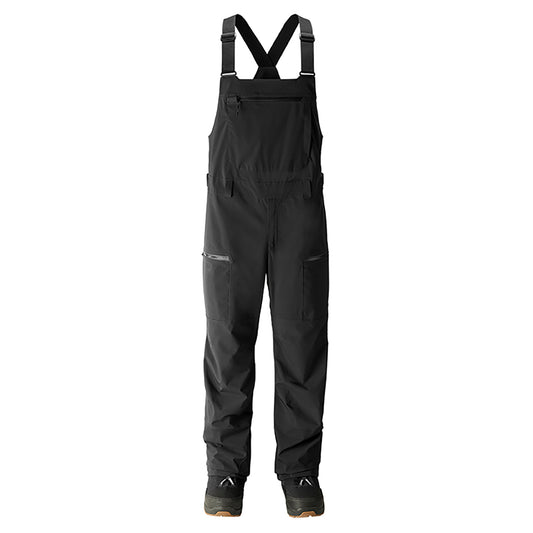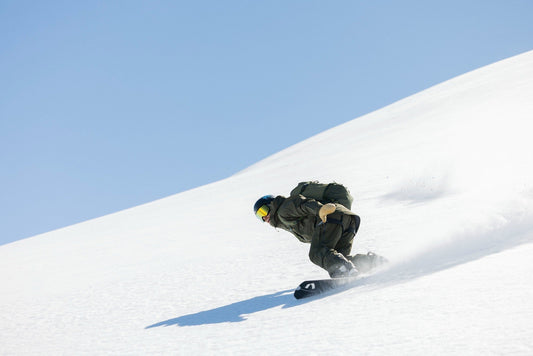Outerwear categories demystified

Have you ever seen outerwear for skiing and snowboarding described as 2L or 3L and wondered what on earth it means?! This article demystifies 2L and 3L garments, and helps you to find the perfect outfit for your special flavour of skiing and snowboarding.
Cirkel’s chief fabric detective, Anna Smoothy walks you through the attributes and best use cases of 2L, insulated 2L and 3L garments.
2L or 3L Jacket - what does the 'L' stand for?
The L in 2L and 3L stands for ‘layer’ and refers to the number of bonded layers in the outershell of a jacket. The outershell doesn’t include the liner on the inside (of 2L garments) which is a separate fabric that is not bonded to the protective shell. Contrary to what you might think - a 3L jacket actually feels thinner and lighter than a 2L jacket.
What are 2L jackets and pants?
A 2L garment’s outershell is made up of two layers bonded into one fabric: the outer layer of this is the tough, durable fabric that comes in fun colours and helps to repel water. This colourful layer is bonded to the membrane - a little piece of magic that holds the keys to waterproofing and breathability - keeping you dry in wet conditions, and releasing heat when you’re working hard.
Inside a 2-layer jacket’s outershell there’s always a liner because that membrane is a sensitive soul that needs protection from all the friction, wear and tear of general use. We often refer to these pieces as a lined shell, for example, that’s how we describe the Patagonia Powder Bowl Jacket. The 2-layer jacket’s liner provides a little extra warmth, and a lot of extra comfort.
2L garments are also known as: 2 layer shells, lined shells, 2 layer construction.

Photo: Patagonia Women’s Powder Bowl Jacket & Pants
Popular 2L jackets and pants in Cirkel’s collection:
- Patagonia Men’s Powder Bowl Jacket & Pants
- Jones Women’s MTN Surf Anorak & Bib Pants
- Jones Men’s MTN Surf Jacket & Bib Pants
- Patagonia Powder Town Jacket (for men & women)
- Patagonia Powder Town Pants (for men & women)
Who should wear 2L garments?
2-layer outfits are a great choice for most resort skiers. On really cold days, we would still recommend adding an insulated midlayer to a lined shell jacket for extra warmth.
What are insulated 2L jackets and pants?
Insulated 2L garments feature the same bonded two layers in the outershell (the outer layer and the membrane), whereas the liner features added insulation for extra warmth.
If a 2L garment’s liner includes an insulation layer, such as synthetic down, then we make sure to include this in Cirkel’s product description. In the product’s features section, we will describe how much insulation there is (e.g., 80g of Thermogreen insulation), so that you can make an informed decision on how warm you want to be.
2L insulated garments are also known as: insulated garments, insulated shells

Photo: Picture U16 Jacket & U10 Bib Pants, Picture U44 Jacket & U77 Bib Pants
Popular insulated ski outfits in Cirkel’s collection:
- Picture Women’s Lement Jacket & Exa Pants
- Picture Men’s Naikoon Jacket & Impact Pants
- Patagonia Insulated Powder Town Jacket (for women & men)
-
Patagonia Insulated Powder Town Pants (for women & men)
Who should wear insulated 2-layer jacket & pants?
Insulated 2L garments are a great choice for beginners who might spend time standing still while listening to their ski instructor (or face planting in the snow!). It’s also a great choice for people from warmer climates, and for people who generally feel the cold.
Finally, when the temperatures drop well below zero, insulated garments are great for everyone.
What are 3L jackets and pants?
3L jackets have the same durable outer layer as the previous categories, and that magical but super sensitive membrane is sandwiched between the outer layer and a protective inner layer that is also highly durable. These fabrics are bonded together into a technical and light package that provides the best breathability.
The most notable trade-off of the mighty 3L garments is that they don’t provide any insulation or warmth - it really is just a protective shell. So a 3L jacket should always be worn with an insulated midlayer (like a puffer jacket or technical midlayer) - unless you’re skiing in spring, darling, then you might get away with it!
3L garments are also known as: 3 layer shells, hard shells, shell garments.

Photo: Ortovox 3L Deep Shell Outfits
Popular 3-layer outfits in Cirkel’s collection:
- Houdini Rollercoaster Jacket (for men & women)
- Houdini Rollercoaster Bib Pants (for men & women)
- Ortovox 3L Deep Shell Jackets (for men & women)
-
Ortovox 3L Deep Shell Pants (for men & women)
Who should wear 3L garments?
3-layer garments are perfect for advanced skiers and snowboarders who really get after it:
- People working hard, skiing or snowboarding from first lifts ‘til last
- People who hike up for freeride lines
- People who ski tour or splitboard
- People who prefer to layer up and down as the temperature changes
In summary:
3L jackets and pants are:
- Lighter than 2L options
- More technical and breathable
- Best for advanced riders to use in a layering system that includes warm midlayers that can be added or subtracted throughout the day
2L jackets and pants are:
- Mid-range weight
- Slightly warmer than a 3L shell
- A great choice for most resort skiers and snowboarders
2L insulated jacket and pants are:
- The warmest option
- Heavier as compared to 3L and 2L garments
- Best for beginners, or people who really feel the cold
Don’t even get us started on 2.5L jackets - we can hit that on in the spring! If you have any questions, or would like individualised product advice, don’t hesitate to reach out via our contact page with details of your use case and any other helpful tips so that we can steer you in the right direction.
Happy skiing everyone!


